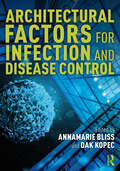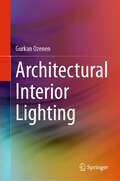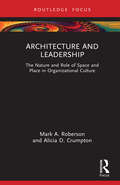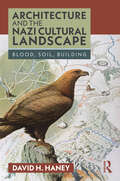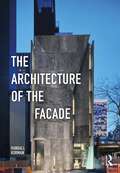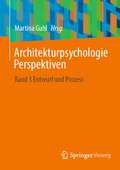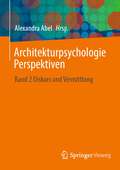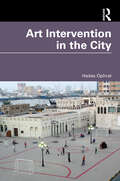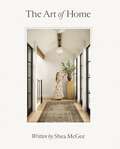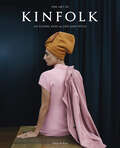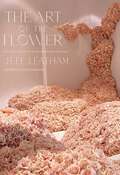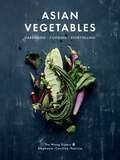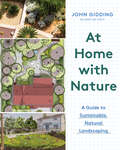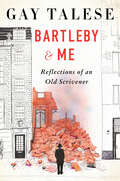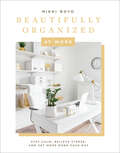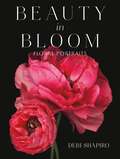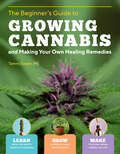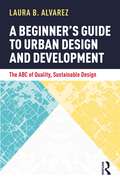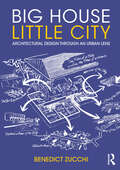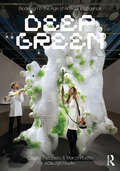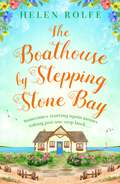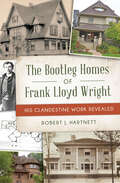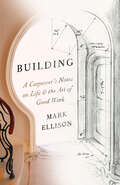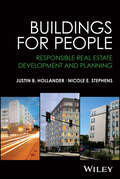- Table View
- List View
Architectural Factors for Infection and Disease Control
by AnnaMarie Bliss Dak KopecThis edited collection explores disease transmission and the ways that the designed environment has promoted or limited its spread. It discusses the many design factors that can be used for infection and disease control through lenses of history, public health, building technology, design, and education.This book calls on designers to consider the role of the built environment as the primary source of bacterial, viral, and fungal transfers through fomites, ventilation systems, and overcrowding and spatial organization. Through 19 original contributions, it provides an array of perspectives to understand how the designed environment may offer a reprieve from disease. The authors build a historical foundation of infection and disease, using examples ranging from lazarettos to leprosy centers to show how the ability to control infection and disease has long been a concern for humanity. The book goes on to discuss disease propagation, putting forth a variety of ideas to control the transmission of pathogens, including environmental design strategies, pedestrian dynamics, and open space. Its final chapters serve as a prospective way forward, focusing on COVID-19 and the built environment in a post-pandemic world.Written for students and academics of architecture, design, and urban planning, this book ignites creative action on the ways to design our built environment differently and more holistically.Please note that research on COVID-19 has exponentially grown since this volume was written in October 2020. References cited reflect the evolving nature of research studies at that time.
Architectural Interior Lighting
by Gurkan OzenenArchitectural Interior Lighting is an essential guide to creating well-lit, visually appealing interior spaces. The book begins with an overview of light and color theory, lighting fundamentals, and design principles. It then covers artificial, natural, decorative, and professional lighting in interior design, as well as standards and regulations, controls and systems, sustainable lighting, energy efficiency, light pollution reduction, and the use of environmentally friendly materials. With a focus on practical applications and real-world examples, this book provides readers with the tools and knowledge necessary to achieve their design goals while considering the latest trends and techniques in the field. A valuable resource for professionals and students in architecture and lighting design, it will also appeal to anyone interested in creating visually stunning and functional interior spaces.
Architecture and Leadership: The Nature and Role of Space and Place in Organizational Culture (Leadership Horizons)
by Mark A. Roberson Alicia D. CrumptonFrom cathedrals to cubicles, people go to great lengths and expense to design their living and working environments. They want their spaces to be places where they enjoy being, reflecting who they are and what they care about. The resultant environments in turn become loud, albeit unvocal, leaders for people occupying those corresponding spaces. The design and use of work and living spaces typifies and thematizes expectations for the group. Essentially, the architecture of rooms, buildings and cities creates cultures by conveying explicit and implicit messages. This is evident when people approach and walk into St. Basil’s Cathedral in Moscow, the Forbidden City in Beijing, the Sydney Opera House in Sydney, Australia, the Jewish Museum in Berlin, or the Rothko Chapel in Houston, to name some examples. While leaders oftentimes lack the resources to have their spaces mirror the greatest architectural achievements of the world, they are in a position to use the art and science of architecture, at whatever scale is available, to their advantage. The creative and intentional use of space and place advances and promotes cherished values and enhances organizational effectiveness. This book explores the essence of good architecture and establishes relevant connections for leaders and managers to strategically design and use the organizational workplace and space to support their mission and purpose, and create aesthetically meaningful work environments. It equips leaders to be culturally astute on what defines good architecture and to incorporate principles of beauty in their leadership practices accordingly and will be of interest to researchers, academics, professionals, and students in the fields of leadership, organizational studies, and architecture theory and practice.
Architecture and the Nazi Cultural Landscape: Blood, Soil, Building
by David H. HaneyThis book traces cultural landscape as the manifestation of the state and national community under the Nazi regime, and how the Nazi era produced what could be referred to as a totalitarian cultural landscape. For the Nazi regime, cultural landscape was indeed a heritage resource, but it was much more than that: cultural landscape was the nation. The project of Nazi racial purification and cultural renewal demanded the physical reshaping and reconceptualization of the existing environment to create the so-called "new Nazi cultural landscape." One of the most important components of this was a set of monumental sites thought to embody blood and soil beliefs through the harmonious synthesis of architecture and landscape. This special group of "landscape-bound" architectural complexes was interconnected by the new autobahn highway system, itself thought to be a monumental work embedded in nature. Behind this intentionally aestheticized view of the nation as cultural landscape lay the all-pervasive system of deception and violence that characterized the emerging totalitarian state. This is the first historical study to consider the importance of these monumental sites together with the autobahn as evidence of key Nazi cultural and geographic strategies during the pre-war years. This book concludes by examining racial and nationalistic themes underlying cultural landscape concepts today, against this historic background.
Architecture and the Nazi Cultural Landscape: Blood, Soil, Building
by David H. HaneyThis book traces cultural landscape as the manifestation of the state and national community under the Nazi regime, and how the Nazi era produced what could be referred to as a totalitarian cultural landscape.For the Nazi regime, cultural landscape was indeed a heritage resource, but it was much more than that: cultural landscape was the nation. The project of Nazi racial purification and cultural renewal demanded the physical reshaping and reconceptualization of the existing environment to create the so-called "new Nazi cultural landscape." One of the most important components of this was a set of monumental sites thought to embody blood and soil beliefs through the harmonious synthesis of architecture and landscape. This special group of "landscape-bound" architectural complexes was interconnected by the new autobahn highway system, itself thought to be a monumental work embedded in nature. Behind this intentionally aestheticized view of the nation as cultural landscape lay the all-pervasive system of deception and violence that characterized the emerging totalitarian state.This is the first historical study to consider the importance of these monumental sites together with the autobahn as evidence of key Nazi cultural and geographic strategies during the pre-war years. This book concludes by examining racial and nationalistic themes underlying cultural landscape concepts today, against this historic background.
The Architecture of the Facade
by Randall KormanThe Architecture of the Facade provides a comprehensive study of the facade as both a physical and cultural artifact, highlighting its significance as a critical component of the civic realm and arguing for the restoration of the art of the facade as both a subject of study within academia and an aspiration within the profession at large. As the principal surface of mediation, contextualization, and representation, the facade carries the lion’s share of responsibility for containing the internal environment and confronting the outer world. And yet, in recent decades, the very question of what exactly a facade is has been raised by the dramatic changes in building technology, advances of parametric design, and the ubiquity of autonomous buildings. The Architecture of the Facade addresses these and other related issues. The book is organized into 12 chapters, with each chapter focusing on a particular aspect of the phenomenon of the facade such as those of wall, the frame, transparency, and the role of the facade in civic space. Korman also discusses proportional systems, the language of composition, the role of precedent, the importance of context, and much more. Over 350 photos and diagrams provide readers with a variety of examples of artful facades throughout history. Online teaching resources that accompany this book include a course syllabus, a glossary, and a Pinterest tack board of facades. This book will be of great interest to students in architecture studios as well as instructors and professional architects interested in facade design.
Architekturpsychologie Perspektiven: Band 3 Entwurf und Prozess
by Martina GuhlWie findet die Begegnung von Psychologie und Architektur während des Entwurfs- und Planungsprozesses statt? In welchem Planungsabschnitt wird architekturpsychologisches Wissen relevant und einsetzbar? Welche Erkenntnisse liefert die urbane Architekturpsychologie für den städtebaulichen Diskurs? In diesem Buch bringen renommierte Expert*innen aus Deutschland, der Niederlande und der Schweiz aus den Disziplinen Architektur, Psychologie, Städtebau, Farbgestaltung und Kommunikationspsychologie ihr Pionierwissen ein.
Architekturpsychologie Perspektiven: Band 2 Diskurs und Vermittlung
by Alexandra AbelIn der gebauten und vom Menschen beeinflussten Umwelt manifestiert sich unser Leben: Lebenshaltung, Lebensformen, Lebensentwurf. Indem man Architektur neu denkt, hat man daher das Potential, die derzeitige Form unseres Lebens zu überdenken. Ein solches Neu, Anders braucht eine Sensibilisierung für die Relevanz der gebauten Umwelt, für die Werte und Zielgrößen, die hinter einer bestimmten Gestaltung stehen und braucht einen gesamtgesellschaftlichen Diskurs zu der zentralen Frage: Wie wollen wir leben? Wie dürfen wir leben? Vor dem Hintergrund ökologischer und ökonomischer Fairness: Welche Lebensformen sind kompatibel mit einer möglichst hohen Lebensqualität für uns alle, als Teil eines Ökosystems, mit dem unser Wohlbefinden unauflöslich verbunden ist. In diesem Band kommen namhafte Expertinnen aus Österreich, der Schweiz und Deutschland aus den Disziplinen der Architektur, der Psychologie, der Kunst und Kunstdidaktik zu Wort, die sich zu der Relevanz und zu den Voraussetzungen einer solchen Debatte äußern.
Art Intervention in the City
by Hadas OphratThis book focuses on the phenomenon of art intervention—an expression of local initiatives by artists, collectives, and art centers wishing to influence the design of the space or make a change in its lifestyle. It pertains not only to acts of protest, but also to the creation of a new civil and political situation in which artists acknowledge their ability to constitute foci of power. These are reflected in acts such as squatting in abandoned buildings, restoring and redistributing them according to principles of social justice; mapping the city based on alternative parameters, such as revealing venues of collective memory or exposing the city's backyard; creating outdoor urban art galleries; and creating temporary architecture and alternative solutions in order to deal with the challenges we face in times of epidemic and environmental crisis. The art intervention phenomenon has intensified since the mid-1990s, so much so that even local authorities the world over have begun to adopt activist and artistic practices. Due to the intensive urbanization processes and current global threats, the creative trends and means surveyed in the book are crucial. This book will interest researchers, planners, urban planners, architects, social activists, local authority executives, art centers, artists, and designers.
The Art of Home: A Designer Guide to Creating an Elevated Yet Approachable Home
by Shea McGeeThe long-awaited design book from Shea McGee, beautifully showcasing all that is possible for every room of your home.Whether it's through her thriving design business, Studio McGee, her popular Netflix series, Dream Home Makeover, or her online community of over five million followers, Shea McGee has shown the world how the principles of high-end design can be applied to any home. As the title of her new book suggests, designing rooms for maximum impact while also remaining approachable to any who enter is an art. But it's also a skill that can be learned because it's inside each one of us.In The Art of Home, Shea takes us through every room of the house, starting with an explanation of process and then guiding our entryways, living rooms, kitchens, offices, kids' rooms, and even our utility rooms. With step-by-step guides paired with her own design projects and the power of her personal stories, Shea helps us transform the most important parts of our lives and how we live.What I love about design is the opportunity to dream and then will that vision into existence.Join Shea as she teaches us to dream and then shows us how to make it reality. Her new book, The Art of Home, is as functional as it is heart-stoppingly beautiful and it will maintain a presence in your home for years to come.
The Art of Kinfolk: An Iconic Lens on Life and Style
by John BurnsAn inspiring collection of the best images from the tastemaking Kinfolk magazine With over 650,000 copies of their books in print and nearly 50 issues of their magazine distributed worldwide, Kinfolk has come to define the taste of a generation: From interiors to fashion, portraiture, food and travel, the consistently boundary-pushing photography produced by the brand has coalesced into one of the most influential and immersive lifestyle aesthetics of the last decade. The Art of Kinfolk brings more than 300 of the most iconic images from the first decade of the magazine into focus. Ranging from the deceptively simple to the surreal to the perennially stylish, this collection of originally commissioned photography captures the arc of an artistic adventure, a creative community at work, and in the process illuminates one of the most enigmatic aesthetics of the era.
The Art of the Flower: A Photographic Collection of Iconic Floral Installations by Celebrity Florist Jeff Leatham
by Jeff LeathamFeaturing celebrated florist Jeff Leatham&’s favorite flower arrangements from throughout his renowned career, The Art of the Flower takes readers on a fragrant, floral journey of Jeff&’s over-the-top and world-famous flower arrangements and installations.. Get an inside look at the arrangements and installations made for his A-list celebrity clientele, as well as for luxurious locations including the Four Seasons Hotels in Beverly Hills, Philadelphia, and Paris; the New York Botanical Gardens; the Philadelphia Flower Show; and Bloomingdale&’s. The Art of the Flower vividly showcases Leatham&’s most famous and award-winning floral tapestries using full-color photography accompanied by commentary that reveals his creative inspiration. Leatham also includes insider flower-arranging tips and tricks that he has used to create his signature jaw-dropping arrangements for celebrity events. FLORIST TO THE STARS: Jeff Leatham has arranged flowers and events for top celebrities including Oprah Winfrey, Tina Turner, the Kardashians, Janet Jackson, Cher, Kylie Minogue, Nadja Swarovski, Chelsea Clinton, Eva Longoria, Dolly Parton, Madonna, and the Dalai Lama. AWARD-WINNING ARRANGEMENTS AND INSTALLATIONS: Jeff Leatham has served as creative director for numerous flower expositions such as &“Habitat&” at the 2021 Philadelphia Flower Show, &“Kaleidoscope&” at the 2020 New York Botanical Garden Orchid Show, and &“The Five Senses&” Holiday window theme at Bloomingdale&’s. EXPERT FLOWER-ARRANGING TIPS AND TRICKS: Learn expert flower-arranging tips that anyone can use to create dramatic arrangements for gifts, parties, events, and home decor. FULL-COLOR PHOTOGRAPHY: The Art of the Flower features gorgeous full-color photography showcasing the beauty and intricacy of every floral arrangement and installation. PERFECT GIFT: With gorgeous floral arrangements and helpful tips and tricks, The Art of the Flower is the perfect gift book and flower arranging guide for anyone who appreciates stunning flowers and glamorous events.
Asian Vegetables: Gardening. Cooking. Storytelling.
by Caroline Wang Stéphanie Wang Patricia Ho-Yi WangWhile bok choy is now a staple on Western grocery store shelves, other Asian vegetables remain unknown—even though they’re delicious, nutritious, and easy to grow in northern climates. Caroline, Stéphanie, and Patricia Ho-Yi Wang, three sisters of Cantonese descent, have made it their mission to introduce gardeners, cooks, and vegetable lovers of all flavours to wider sources of sustenance. Organized around fifteen Asian vegetables that are presented according to the rhythm of the seasons, this lush, full-colour book offers advice on growing and harvesting organic crops intended for both weekend and commercial gardeners, along with a host of ideas to preserve and prepare them, including forty or so recipes, some of which have been developed by renowned chefs. The Wang sisters complement the book’s practical advice by offering thoughts on Asian vegetables from a cultural point of view and sharing the importance of these foods within their own family, members of whom left China to immigrate to Madagascar before settling in Québec. Asian Vegetables is a generous and gorgeous tribute to good food, to the land, and the importance of strong roots.
At Home with Nature: A Guide To Sustainable, Natural Landscaping
by John GiddingGo from manicured lawn to eco-conscious garden with this step-by-step guide from HGTV star John Gidding. Increased awareness of the environment and an ever-present interest in curb appeal means that homeowners are eager for more sustainable, natural landscaping. And why shouldn’t they be? In addition to supporting local flora and fauna, ditching grass for lush, native plants helps lower water bills and results in self-sustaining gardens long-term. In John Gidding’s At Home with Nature, American homeowners will find thorough blueprints to reap these benefits and bring their dream garden to life. Complete with specific information for every U.S. bioregion, a glossary of native plants, illustrated yard renderings and photos, and detailed explanations of suburban codes, this book has examples and techniques to build responsible natural spaces. And as an HGTV star with over a decade of design experience, Gidding is the landscaping expert readers need to get the job done. At Home with Nature is the ultimate resource for creating beautiful and beneficial home gardens.
Bartleby and Me: Reflections of an Old Scrivener
by Gay Talese“Literary Legend” (New York) Gay Talese retraces his pioneering career, marked by his fascination with the world's hidden characters.In the concluding act of this "incomparable" (Air Mail) capstone book, Talese introduces readers to one final unforgettable story: the strange and riveting all new tale of Dr. Nicholas Bartha, who blew up his Manhattan brownstone—and himself—rather than relinquish his claim to the American dream.“New York is a city of things unnoticed,” a young reporter named Gay Talese wrote sixty years ago. He would spend the rest of his legendary career defying that statement by celebrating the people most reporters overlooked, understanding that it was through these minor characters that the epic story of New York and America unfolded. Inspired by Herman Melville’s great short story “Bartleby, the Scrivener,” Talese now revisits the unforgettable “nobodies” he has profiled in his celebrated career—from the New York Times’s anonymous obituary writer to Frank Sinatra’s entourage. In the book’s final act, a remarkable piece of original reporting titled “Dr. Bartha’s Brownstone,” Talese presents a new “Bartleby,” an unknown doctor who made his mark on the city one summer day in 2006. Rising within the city of New York are about one million buildings. These include skyscrapers, apartment buildings, bodegas, schools, churches, and homeless shelters. Also spread through the city are more than 19,000 vacant lots, one of which suddenly appeared some years ago—at 34 East 62nd Street, between Madison and Park Avenues—when the unhappy owner of a brownstone at that address blew it up (with himself in it) rather than sell his cherished nineteenth-century high-stoop Neo-Grecian residence in order to pay the court-ordered sum of $4 million to the woman who had divorced him three years earlier. This man was a physician of sixty-six named Nicholas Bartha. On the morning of July 10, 2006, Dr. Bartha filled his building with gas that he had diverted from a pipe in the basement, and then he set off an explosion that reduced the fivestory premises into a fiery heap that would injure ten firefighters and five passersby and damage the interiors of thirteen apartments that stood to the west of the crumbled brownstone.Talese has been obsessed with Dr. Bartha’s story and spent the last seventeen years examining this single 20 x 100 foot New York City building lot, its serpentine past, and the unexpected triumphs and disasters encountered by its residents and owners—an unlikely cast featuring society wannabes, striving immigrants, Gilded Age powerbrokers, Russian financiers, and even a turncoat during the War of Independence—just as he has been obsessed with similar “nobodies” throughout his career. Concise, elegant, tragic, and whimsical, Bartleby and Me is the valedictory work of a master journalist.
Beautifully Organized at Work: Bring Order and Joy to Your Work Life So You Can Stay Calm, Relieve Stress, and Get More Done Each Day (Beautifully Organized Series #2)
by Nikki BoydBring peace and joy into your workspace as you learn how to declutter your office and create a stress-free work environment.Clutter and mess can distract you, stress you out, and get in the way of efficiently getting work done. That's why Beautifully Organized at Work was created to give you practical tips and tools for how to mindfully transform your workspace and get organized so you can feel better about your work and be better set up for success.YouTube star and professional organizer Nikki Boyd, author of the bestselling book Beautifully Organized, brings her expert skills to this book.Beautifully Organized at Work includes:Everything you need to know about decluttering your desk and organizing files--both in your physical and digital spaceValuable advice on how to plan your work days so you can have a well-balanced and productive week How to select the desk, chair, and lighting that are ideal for your needsInformation tailored for cubicle, co-working spaces, working from home, and moreTips on how to get your coworkers involved in creating a beautifully organized breakroom, conference room, and lobby
Beauty in Bloom: Floral Portraits
by Debi ShapiroA poppy bud captured moments before blossoming. A statuesque tuberose as if carved out of alabaster. A pair of delicate pink dahlias joined like two starfish floating in the sea.Beauty in Bloom is the debut collection of work by Debi Shapiro, a visual artist who creates beautiful imagery inspired by her two passions—flowers and photography. More than 200 floral portraits in this exquisite book capture the depth and luminosity of a single bloom to lush bouquets with breathtaking intimacy and vibrant energy. Every translucent petal, tender green stem, and grain of pollen shimmers with painterly detail reminiscent of the works of the great botanical artists and engravers of the eighteenth century. From the bold crimson beauty of an Oriental poppy to the seductive lure of a pink Protea peeking out from behind its thick foliage to the timeless classic beauty of a garden rose, it&’s a flower lover&’s dream. Debi&’s work truly makes every bloom a leading lady.
Beginner's Guide to Growing Cannabis and Making Your Own Healing Remedies: Learn about the Plant's Medicinal Properties; Grow Outdoors in Your Own Backyard; and Make Tinctures, Salves, Edibles, and Oils
by Tammi SweetAn herbalist and teacher offers an accessible and practical guide to growing cannabis outdoors for personal use, and preparing and using cannabis medicine for a range of common ailments. CBD and other cannabis-based products are widely available and popular, with the number of dispensaries increasing exponentially every month. But not all products are equal in terms of quality. The best rule of thumb to know the grower or, even better, grow a small quantity of the plant in the home garden and make your own medicines. This beginner-friendly guide, written by a herbalist who specializes in every aspect of making and using cannabis medicine, teaches how to grow healthy cannabis plants outdoors for personal use, and make your own customized remedies for addressing a range of common ailments and chronic conditions. With step-by-step photography taken in her own garden, author Tammi Sweet, shows the growing phases of the plant and details techniques for planting, caring for, harvesting, drying, and curing the plant. A complete how-to guide to medicine-making shows the reader how easy it is to make potent, safe, and affordable whole-plant tinctures, salves, edibles, and oils. This publication conforms to the EPUB Accessibility specification at WCAG 2.0 Level AA.
A Beginner's Guide to Urban Design and Development: The ABC of Quality, Sustainable Design
by Laura B. AlvarezThis book provides invaluable guidance to all those with an interest in placemaking and the built environment, from those with no experience to those who have worked for many years in industry, illustrating key principles that will secure higher quality, more sustainable design in accessible, jargon-free language. The author explains the design process in a straightforward way, exploring the different roles and highlighting the opportunities and limitations different agencies have to influence design over the various stages of the process. Examples from the UK and worldwide look at how the system operates and how best practice can make a real difference on the ground. Case studies examine situations where quality or sustainability fell short – and how this could have been avoided. This book also showcases a variety of evaluation tools, explaining how they operate, and giving guidance on how to create project-specific tools to drive schemes forward. With community empowerment at its core, the book explains technical language and shares bountiful knowledge to broaden place democracy and make influencing design accessible to many, not just a few. This is a book that brings together all the various parties involved in shaping the built environment, demonstrating that collaboration and mutual understanding are key to achieving better quality, more sustainable design.
Big House Little City: Architectural Design Through an Urban Lens
by Benedict ZucchiCombining architectural and urban thinking in an unusual and engaging way, this book presents an integrated approach to architectural theory and design. Leon Battista Alberti’s assertion in his famous Renaissance treatise that ‘the city is like a big house, and the house is in turn like a little city’ forms the springboard for a series of reflections on architecture’s relationship with urbanism and how their once intimate symbiosis, unravelled by International Style Modernism, can be recovered. Explicit references to Alberti’s house-city phrase have been made by figures as diverse as the architects Louis Kahn, Aldo Van Eyck, Denys Lasdun and Niels Torp and novelist Italo Calvino. But, as the book shows, thinking of buildings as little cities provides a new lens through which to reappraise the contributions of many other architects, including Le Corbusier, Frank Lloyd Wright, Alvar Aalto, Eliel Saarinen, Bernard Rudofsky, Hans Scharoun, Leon Krier, Fumihiko Maki, Charles Correa and Team 10. In doing so, the author identifies common themes that form an unexpected bridgehead between the urban and architectural approaches of Antiquity, the Middle Ages, Renaissance and 20th century. The book explores buildings from across the globe, including lesser-known projects, such as Wright’s unbuilt house in Italy or Saarinen’s master plan for Cranbrook Academy, as well as more recent projects by Niels Torp, Behnisch Architekten, Sou Fujimoto, Peter Barber and WOHA. It concludes with practical case studies of residential, health, education and workplace projects from different countries, fulsomely illustrated with many drawings and photographs. These show how architectural design viewed through an urban lens provides a conceptual framework for breaking down the scale of large buildings and integrating them with their context. And crucially, these also show a very accessible way of explaining evolving designs to the intended users and eliciting their participation in the design process. The book offers a compelling approach to the design of projects at all scales, within an ecological perspective: the sense that big and small, cities and buildings must be approached holistically if we are to reverse the degradation and depletion of our habitat, both natural and man-made.
Biodesign in the Age of Artificial Intelligence: Deep Green
by Claudia Pasquero Marco PolettoBiodesign in the Age of Artificial Intelligence: Deep Green investigates the potential of nature-based technology for shaping the evolution of contemporary architecture and design. It takes on the now pervasive topic of design intelligence, extending its definition to encompass both biological and digital realms. As in their first title, Systemic Architecture: Operating Manual for the Self-Organizing City, the authors engage the topic through the specific lens of their innovative design practice, ecoLogicStudio, and their research at the University of Innsbruck and at the Bartlett, UCL. Part One of the book, entitled PhotoSynthetica™, illustrates design solutions that engage the urban microbiome and seek to achieve an immediate impact, while Part Two, entitled Deep Green, includes synthetic landscapes and operates within a much larger spatio-temporal frame, going beyond human perception and life span to envision design as a geographical and geological force. In the age of catastrophic climate change, such perceptual expansion helps to clarify that change cannot simply be stopped or rolled back. We must instead establish more positive dynamics of change within the living world. To this end, this book proposes to engage with design and architecture as an extended cognitive interface, a sentient being that is co-evolutionary and symbiotic with the living planet, contributing to its beauty and to our continued enjoyment of it.
The Boathouse by Stepping Stone Bay
by Helen Rolfe'Comforting and uplifting, this book is a joy to read' - MY WEEKLY, on The Farmhouse of Second ChancesSun, sand and secrets at the bay!As a kid, Nina O'Brien spent all her summers at her grandparents' cabin by the beach at Stepping Stone Bay. Long, sunny days full of fun and laughter with her best friends, Leo, Adrian, and Maeve, her friendship with Leo slowly blossoming into love. Until one fateful night changed everything for them all... Twelve years later, Nina must return to the bay to renovate the old cabin and pass it on to a new owner. But not only does Leo still live in the cabin next door, he works at his family's boathouse right there in the bay. As they begin to work through their differences and what happened all those years ago, can Nina really walk away from him twice? Maeve has finally returned home to face the past. Her eleven-year-old son, Jonah, loves the sea, unlike Maeve who is terrified of it. But she knows she can't keep Jonah away from the sea or the truth forever..A heartwarming and uplifting story about second chances and facing the secrets of the past. Perfect for fans of Philippa Ashley, Holly Martin and Ali McNamara. Readers adore Helen's heartwarming storytelling'Enchanting... Employing all the warmth and charm of Maeve Binchy, and a special brand of kindness that she has made her own, Rolfe weaves together elements of mystery, romance, family relationships and the warmth of community in a story guaranteed to bring laughter, tears and miles of smiles' Lancashire Post'A warm, comforting tale of family and community which brims with kindness and love' Annie Lyons'A heartwarming story about family, forgiveness and the importance of kindness... If you're looking for a feelgood novel in these difficult times, this is definitely it!' Fiona Harper'A lovely community, full of friendship and love''I enjoyed every minute of this book and found it very hard to put down''Lovely, feel-good...filled with lots of love''Gave you all the emotions: suspense, happiness and excitement''Helen Rolfe's writing brought a smile to my face''Loved loved loved this fabulous book'
Bootleg Homes of Frank Lloyd Wright, The: His Clandestine Work Revealed (Landmarks)
by Bob HartnettUncover the secret Chicago laboratory of Frank Lloyd Wright's Prairie Style. Before Frank Lloyd Wright officially launched America's most famous architectural career, he was designing the building blocks of his legendary prairie style on the side. In violation of his contract with his employers, Adler and Sullivan, Wright moonlighted as an independent architect from his Oak Park studio. From 1892 through the spring of 1893, he experimented with the elements that would become his signature in houses in Chicago, La Grange and Oak Park. The full roster of these "bootleg homes" has remained a matter of mystery and debate. Robert Hartnett seeks to provide the first definitive account of the hidden artifacts of Wright's storied legacy.
Building: A Carpenter's Notes on Life & the Art of Good Work
by Mark EllisonA visionary carpenter shares indelible stories on building a life worth living, revealing powerful lessons about work, creativity, and design through his experience constructing some of New York&’s most iconic spaces.For forty years, Mark Ellison has worked in the most beautiful homes you&’ve never seen, specializing in rarefied, lavish, and challenging projects for the most demanding of clients. He built a staircase that the architect Santiago Calatrava called a masterpiece. He constructed the sculpted core of Sky House, which Interior Design named &“Apartment of the Decade.&” His projects have included the homes of David Bowie, Robin Williams, and others whose names he cannot reveal. He is regarded by many as the best carpenter in New York.Building: A Carpenter&’s Notes on Life & the Art of Good Work tells the story of an unconventional education and how fulfillment can be found in doing something well for decades. Ellison takes us on a tour of the lofts, penthouses, and townhomes of New York&’s elite, before they&’re camera-ready. In a singular voice, he offers a window into learning to live meaningfully along the way. From staircases that would be deadly if built as designed and algae-eating snails boiled to escargot in a penthouse pond, to the deceptive complexity of minimalist design, Building exposes the tangled wiring, scrapped blueprints, and outlandish demands that characterize life in the high-stakes world of luxury construction.Blending Ellison&’s musings on work and creativity with immersive storytelling and original sketches, photos, and illustrations, Building is a meditation on crafting a life worth living, and a delightful philosophical inquiry beyond the facades that we all live behind.
Buildings for People: Responsible Real Estate Development and Planning
by Justin B. Hollander Nicole E. StephensBUILDINGS FOR PEOPLE Buildings for People: Responsible Real Estate Development and Planning explores how to balance social concerns with financial and investment considerations without sacrificing profit. This timely volume provides key technical and practical knowledge while exploring real estate development and planning through a multi-level lens—revealing the systemic factors that both govern and are governed by the real estate process. Beginning with site selection, the authors discuss financing, site improvement, architecture, landscape architecture, site planning, construction, and evaluation within a broader political, economic, and social context. Throughout the text, the authors explain key theories and methods of professional practice, and highlight how important social issues are interconnected to the business of real estate development and planning. Demonstrating how the desire for profit can be balanced with the needs of society Buildings for People: Responsible Real Estate Development and Planning is an excellent textbook for advanced undergraduate and graduate students in real estate, urban planning, urban design, and urban studies courses, as well as a valuable resource for researchers and professionals who want a multidisciplinary understanding of the built environment.
